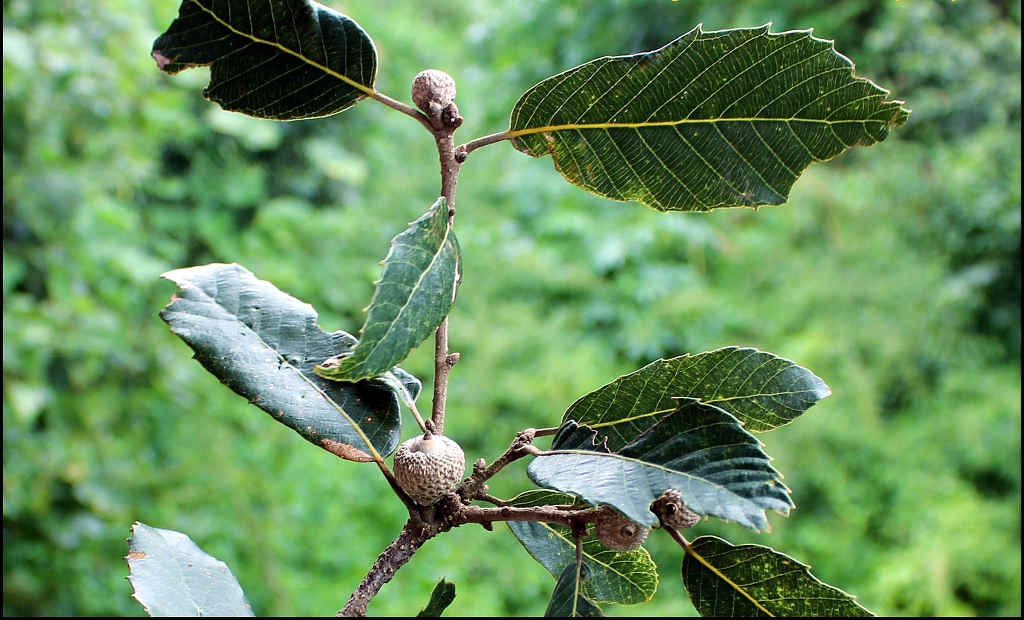
Quercus leucotrichophora (Kharsu )
Quercus leucotrichophora, locally known as Kharsu oak, is a dominant evergreen oak species found in the temperate forests of the Great Himalayan National Park (GHNP). Known for its resilience and ecological importance, Kharsu forms thick oak forests that serve as critical habitats for numerous endemic and endangered species.
Habitat and Distribution in GHNP
Kharsu oak thrives at elevations between 2,000 and 3,000 meters. It is most commonly found in:
-
Moist temperate zones of the Sainj and Tirthan valleys
-
North-facing slopes with deep, well-drained soils
-
Mixed oak-conifer forests and pure oak stands
Its presence marks the transition from lower broadleaf forests to upper coniferous zones.
Botanical Features
-
Leaves: Leathery, dark green above, with silvery-white undersides due to dense hairs
-
Height: Can grow up to 25 meters
-
Bark: Thick and deeply furrowed
-
Acorns: Produced annually, serving as food for birds and mammals
The dense canopy formed by Kharsu trees provides shade and moisture retention, vital for the undergrowth and microhabitats.
| Local name | Ban oak, Brown oak or Kharshu oak |
| Botanical name | Quercus leucotrichophora (syn. Q incana) |
| Family | Fagaceae |
| Description | It is a tree having young shoots tomentose beneath, nerves straight, cuspidate serrate, scales of acorn imbricate. It is found at an altitude of 1200-2400m. |
| Flowers and Fruits | April – May |
| Distribution | It is commonly found in temperate forest, Tirthan valley. |
Ecological Role in GHNP
Quercus leucotrichophora is a keystone species in the GHNP ecosystem:
-
Supports wildlife such as Himalayan black bears, leopards, pheasants, and oak-dependent birds
-
Prevents soil erosion and maintains watershed health
-
Enhances carbon sequestration and local climate regulation
Its leaf litter supports rich fungal and microbial life, sustaining forest floor fertility.
Traditional and Local Uses
In areas surrounding GHNP (outside the park’s protected core), Kharsu oak has traditionally been used for:
-
Fodder and firewood
-
Charcoal production
-
Roofing materials and traditional tools
Inside GHNP, however, strict conservation policies ensure minimal human impact and natural regeneration of this vital species.



